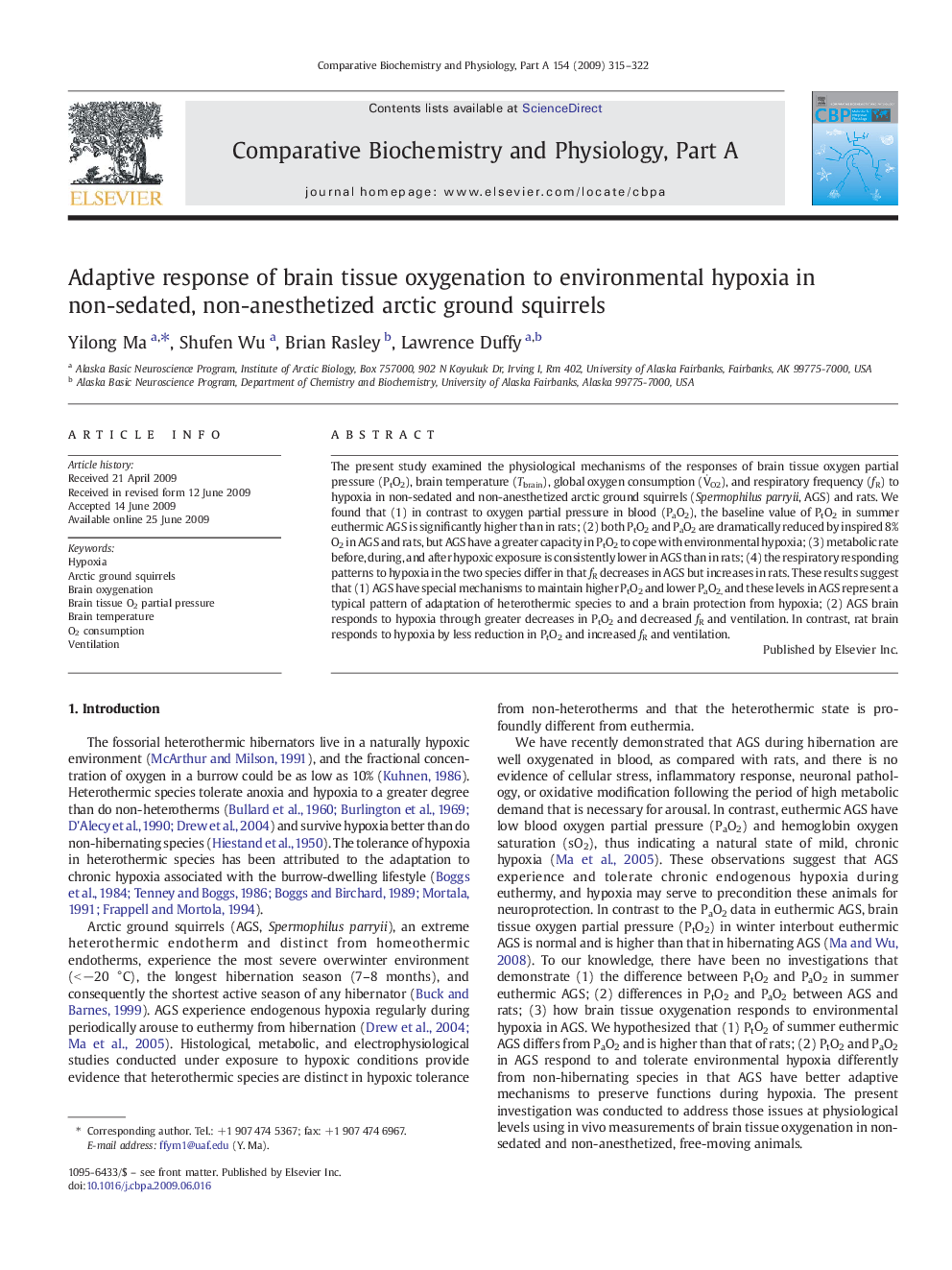| کد مقاله | کد نشریه | سال انتشار | مقاله انگلیسی | نسخه تمام متن |
|---|---|---|---|---|
| 1972725 | 1060288 | 2009 | 8 صفحه PDF | دانلود رایگان |

The present study examined the physiological mechanisms of the responses of brain tissue oxygen partial pressure (PtO2), brain temperature (Tbrain), global oxygen consumption (V̇O2), and respiratory frequency (fR) to hypoxia in non-sedated and non-anesthetized arctic ground squirrels (Spermophilus parryii, AGS) and rats. We found that (1) in contrast to oxygen partial pressure in blood (PaO2), the baseline value of PtO2 in summer euthermic AGS is significantly higher than in rats; (2) both PtO2 and PaO2 are dramatically reduced by inspired 8% O2 in AGS and rats, but AGS have a greater capacity in PtO2 to cope with environmental hypoxia; (3) metabolic rate before, during, and after hypoxic exposure is consistently lower in AGS than in rats; (4) the respiratory responding patterns to hypoxia in the two species differ in that fR decreases in AGS but increases in rats. These results suggest that (1) AGS have special mechanisms to maintain higher PtO2 and lower PaO2, and these levels in AGS represent a typical pattern of adaptation of heterothermic species to and a brain protection from hypoxia; (2) AGS brain responds to hypoxia through greater decreases in PtO2 and decreased fR and ventilation. In contrast, rat brain responds to hypoxia by less reduction in PtO2 and increased fR and ventilation.
Journal: Comparative Biochemistry and Physiology Part A: Molecular & Integrative Physiology - Volume 154, Issue 3, November 2009, Pages 315–322